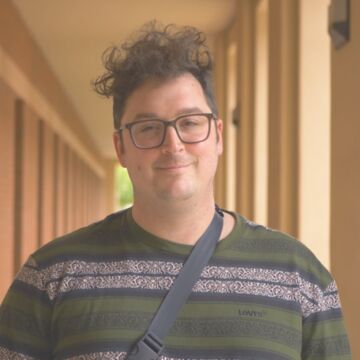|
Description
Professional Practice: Web Art is a course that combines creative and practical knowledge related to web site development. Launched in 1989 as a remote file sharing system for scientists, the World Wide Web is nearly thirty years old. Today, the web functions as an exhibition space, a communications hub as well as a nexus for creative expression. Students in the Web Art class will learn the Hypertext Mark-Up Language (HTML), which is the basis of WWW authoring. Potential overall format and conceptual frameworks for developing a media-rich web site will be investigated, and ways of subverting the traditional web page format in order to create unique approaches to the dynamics of the web will be explored. Course activities include technical tutorials, preparation of a CV, writing of a project statement, and the creation of a web site.
|
Class Number
2190
Credits
3
|
|
Description
In this seminar, our touchstone is the manifesto “We are All Very Anxious” by The Institute for Precarious Consciousness (2014), which suggests a notion of anxiety as intersectional. Taking up their injunction that we need to build “machines for fighting anxiety”, students will situate their art practice to pursue a research question intervening between the social and the psychic, the ecological and the cultural. Through a blend of seminar discussion, research, workshop, tutorial, we will examine and engage contemporary techniques that help us to ask what anxiety is in 2022, what it does, and most importantly, what it could do. Students should be prepared to exercise their metier towards new ends. The course pairs traditions of theorizing anxiety with modes of artistic inquiry such as critical making, speculative design, and hyperstition. We explore the psychopolitical moblizations of anxiety in readings from authors such as Byung Chul Han and Renata Salecl as as a technological reading of anxiety in Gilbert Simondon’s philosophy of technology, and the relationship between technology, the environment, and mind through Felix Guattari. Technical tutorials will introduce interactive art, computer vision, and machine learning techniques in p5*js and Max/MSP/Jitter relevant to student interests. Students should expect to complete readings and a project for each of the three areas. Instructor will give technical tutorials, but students should bring existing computational or technological skills to the course which they build in parallel with the development of projects.
|
Class Number
2164
Credits
3
|
|
Description
Post-modernist and post-structuralist art, architecture, literature, music and performance have often made overtures to the chaotic, while admitting the creative act always requires structuration driven by a more-than-human intentionality (see Cage’s definition of music as “organized sound”). Sidestepping aesthetics altogether, Feminist scholar Elizabeth Grosz understands art as a non-extraordinary rerouting of the chaotic forces of the earth to create a territory. A territory is a culture, a culture of intensities. For psychoanalyst and activist Felix Guattari, the artist, and perhaps exceptionally the improviser, must open themselves onto the cosmos — which he calls the chaosmos. Despite historical adoration for chaos as a catalyst for creativity, appeals to chaos might feel exasperating in 2023. The founding scientists of chaos theory wrote “we grow in direct proportion to the amount of chaos we can sustain and dissipate” (Prigogyne and Stengers, 1984). Unexpected loss of human life in the pandemic, the rise of stochastic terrorism fueled by extremism, and the industrialized destruction of our very lifeworld — haven’t we had our fill of chaos? In four parts, this seminar charts a path across disciplines and between chaos and order in the creative act. First we begin with the scientific origins of chaos theory (Poincare’s “three body problem”), early systems theory (Von Uexhull’s ecology), and Ilya Prigogine and Isabelle Stenger’s seminal Order out of Chaos. Next we will fashion a cultural thermodynamics through science fiction (Cixin Liu, Ursula K. Le Guin) and feminist art theory (Grosz, Institute for Precarious Consciousness). We turn to the chaosmos (a chaotic cosmology) as articulated by activist and in-disciplinary thinker Felix Guattari as well as radical empiricist-pragmatists (Bergson, Dewey). Finally, we revisit the cybernetic bedrock of chaos theory: computation. We turn to both arguments about what it is (Galloway, Dhaliwal, Parisi), what we imagine it can do in a chaotic world(Turner, Curtis), and what we argue it can’t do (Simondon, Yuk Hui). Students are encouraged to bring their own practices and perspectives to the readings and to a final paper. In addition to seminar discussions and student presentations about readings, students will choose to respond, elaborate, and interject into the course’s discourse either through creative projects or papers.
|
Class Number
2194
Credits
3
|

